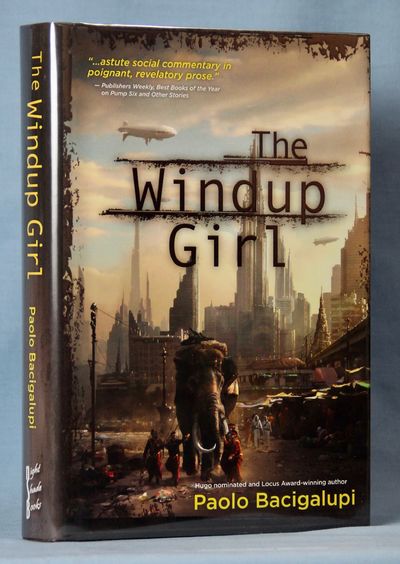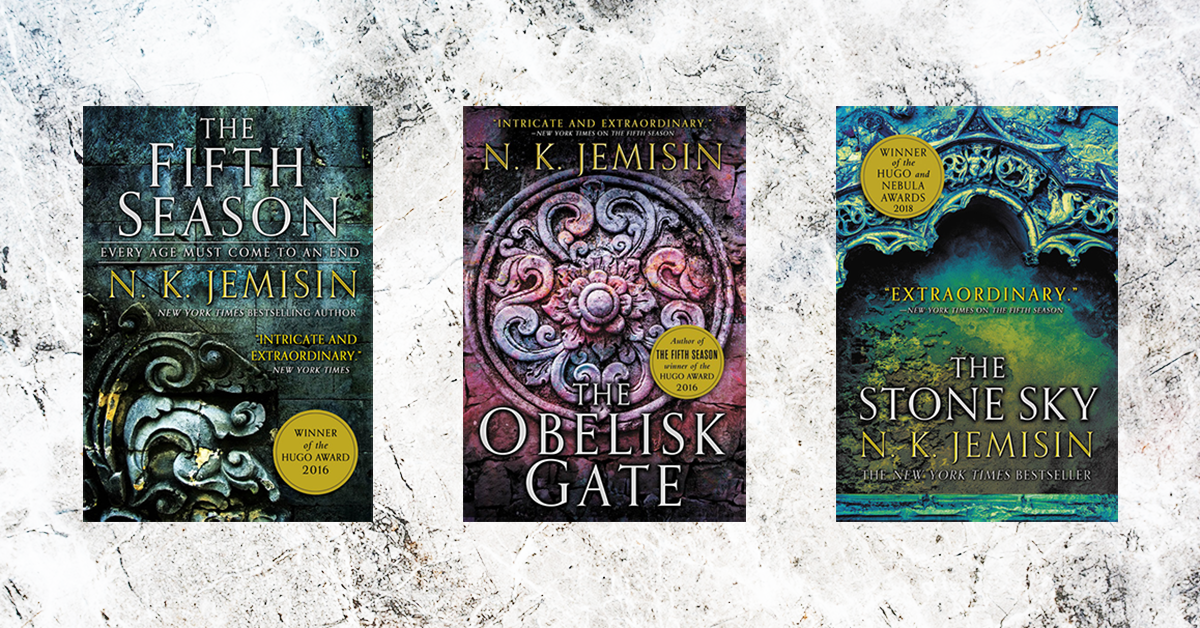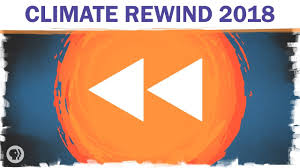The best, weirdest, and scariest books about climate change.
"It is worse, much worse, than you think.” So begins journalist David Wallace-Wells’ The Uninhabitable Earth: Life After Warming, a book about climate change that reminds you, chapter after chapter, that even if you think you know how bad things are, and even if you think you know how much worse they’re going to get, you probably have no fucking idea. Humanity, writes Wallace-Wells, is facing a crisis that is literally existential—one “in which our best-case outcome is death and suffering at the scale of 25 Holocausts, and the worst-case outcome puts us on the brink of extinction.”
In the past decade, awareness of climate change has increasingly shaped our art—from Mad Max: Fury Road to First Reformed to Game of Thrones, a show that’s about to conclude its years-long story about humanity’s stubborn refusal to prepare for the end of the world. (As Tyrion puts it, “Peoples’ minds aren’t made for problems that large.”) Even works created when we were gleefully unaware of climate change have newfound relevance: In 1939, John Steinbeck’s The Grapes of Wrath followed the unwanted, sweat-soaked refugees of a drought-strangled Dust Bowl; 80 years later, it reads less like history and more like prophecy.
Yet this month, the 49th annual Earth Day will likely pass just as its predecessors have—as a mere reminder of how little governments, corporations, and individuals are actually doing. If you’re looking to dig a little deeper, here are some of the best, weirdest, and scariest books about climate change.
The Uninhabitable Earth: Life After Warming by David Wallace-Wells(2019, Tim Duggan Books)
If it seems overly dramatic when Wallace-Wells warns that the best outcome of climate change will be equivalent to 25 Holocausts, it’s only because the sheer scale of the coming ecological collapse is nearly impossible to comprehend, let alone convey. “Rhetoric often fails us on climate,” Wallace-Wells explains, “because the only factually appropriate language is of a kind we’ve been trained, by a buoyant culture of sunny-side-up optimism, to dismiss, categorically, as hyperbole.”
But what seems hyperbolic is reality: What’s coming, Wallace-Wells reports, are interlinked crises that will produce “a new kind of cascading violence, waterfalls and avalanches of devastation, the planet pummeled again and again, with increasing intensity and in ways that build on each other and undermine our ability to respond.” He lays out the broad strokes—more wars, baking cities, annihilated coastlines, less water and more fire, hurricanes, climate refugees—but The Uninhabitable Earth is most horrific when it gets specific: By 2050, Earth’s oceans will contain more plastic than fish. In 2019, “more than 10,000 people die from air pollution daily.” “In California,” he notes, “a single wildfire can entirely eliminate the emissions gains made that year by all of the state’s aggressive environmental policies. Fires of that scale now happen every year.”
There’s blame, of course—while Wallace-Wells underplays the culpability of corporations and governments, he also reminds readers that, in 2018, “American voters in deep-blue Washington State rejected a carbon tax at the ballot box, and the worst French protests since the quasi-revolution of 1968 raged against a proposed gasoline tax.” But more than anything else, The Uninhabitable Earthestablishes that any meaningful attempt to avert climate change’s most catastrophic effects requires nothing less than a “global mobilization at the scale of World War II.” And that, Wallace-Wells adds, is “an undertaking of ambitions so inconsistent with the present tense of politics in nearly every corner of the world, that it is hard not to worry what will happen when that mobilization does not happen.”
The Windup Girl (2009, Night Shade Books) and The Water Knife (2015, Alfred A. Knopf) by Paolo Bacigalupi
One of the best writers working in “cli-fi”—science fiction and fantasy that relates to ecological collapse—is Paolo Bacigalupi, who tells strange, searing stories about unflinchingly realistic futures. The Windup Girl, set in sweltering, 23rd century Thailand, introduces a world undone by corporatized food supplies and long-risen seas; The Water Knife examines a desiccated, near-future American West, where everyone except the mega-rich has to fight, beg, or kill for water. Bacigalupi’s plots are good and his characters are better, but the lure of his work are his futures—places that never feel alarmist or unbelievable, despite our worst nightmares having come to pass.
The Fifth Season, The Obelisk Gate, and The Stone Sky by N.K. Jemisin(2015-2017, Orbit)
From Ursula K. Le Guin to Margaret Atwood to Nnedi Okorafor, it’s not a coincidence that some of the best writers of science fiction and fantasy—genres that dare to ask questions other literary forms shy away from—have been at the foreground of exploring themes of climate change. N.K. Jemisin’s “Broken Earth” trilogy takes place on an Earth torn open by earthquakes, where humans—“ephemeral things in the planetary scale”—navigate the “rocky, ugly shatterland” of a planet intent on killing them. (“The people became what Father Earth needed, and then more than He needed,” reads one of The Fifth Season’s bits of mythology. “Then we turned on Him, and He has burned with hatred for us ever since.”) Jemisin’s prose and world—one full of all the hopes and cruelties of our own—is striking, but just as remarkable is the author’s no-fucks-given call-out of writers who are too oblivious or frightened to address climate change. “Anyone who’s writing about the present or future of this world needs to include climate change, simply because otherwise it’s not going to be plausible,” Jemisin said earlier this year, “and even fantasy needs plausibility.”
Wild Ones: A Sometimes Dismaying, Weirdly Reassuring Story About Looking at People Looking at Animals in America by Jon Mooallem(2013, Penguin Press)
We’re often able to turn a blind eye to human pain, but the suffering of animals is harder to dismiss, probably because dogs are nice to pet. With the deeply enjoyable, hauntingly melancholy Wild Ones, Mooallem roams from California’s Antioch Dunes, where the butterfly population has plummeted, to Churchill, Manitoba, where tourists come to see polar bears while they still can, examining the increasingly untrue stories we tell ourselves about animals, and the people desperate to preserve some small semblance of nature.
Uncivilisation: The Dark Mountain Manifesto by Paul Kingsnorth and Dougald Hine (2009, The Dark Mountain Project) and Walkaway by Cory Doctorow (2017, Tor Books)
In 2009, a group calling themselves the Dark Mountain Project released a baroque manifesto. It began with an Emerson quote (“The end of the human race will be that it will eventually die of civilization”), pondered “underlying darkness at the root of everything we have built,” and proclaimed that “we find ourselves, all of us together, poised trembling on the edge of a change so massive that we have no way of gauging it. None of us knows where to look, but all of us know not to look down. Secretly, we all think we are doomed: even the politicians think this; even the environmentalists.”
Declaring civilization’s end inevitable, the manifesto argues our efforts are best used to imagine what will come afterward. (Shortly after releasing the manifesto, the group hosted what co-founder and disillusioned environmentalist Paul Kingsnorth described as “part literary festival, part musical weekend, part training camp for an uncertain future.”) A different elegy for our civilization came in 2017 with Cory Doctorow’s Walkaway, which imagines a post-scarcity future where “walkaways” wander our poisoned earth, rejecting “default reality” and inventing new communities, new philosophies, and new families. It’s a utopia, yes, but one based on innovation and humanism rather than woo-woo bullshit. Doctorow acknowledges our planet is on fire, then suggests something better might rise from the ashes.
“Looking back across the decades, you want to scream to the world to do things differently: Stop dismantling ecosystems, stop burning fossil fuels, start cooperating before everything falls apart,” Hillary Rosner writes in her New York Times review of Horizon, the new book from Oregon nature writer Barry Lopez. She’s right—it’s hard not to get lost in rage and blame, for ourselves and those who preceded us.
But looking back keeps us from truly seeing a future that, however dark, is where we’re headed. It’s nearly impossible to read anything, from the news to The Uninhabitable Earth, and continue to believe that as a species, we’re remotely interested in preserving ourselves or our ecosystem, let alone arrange “a global mobilization at the scale of World War II.” But even Wallace-Wells points out that we aren’t utterly without control.
“All told, the question of how bad things will get is not actually a test of the science; it is a bet on human activity,” he writes. “How much will we do to stall disaster, and how quickly? These are the only questions that matter.”

Source: https://www.thestranger.com/books/2019/04/10/39874097/a-reading-list-for-the-end-of-the-world

